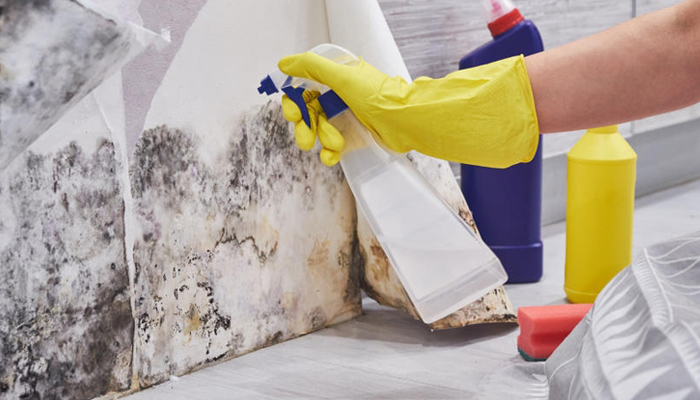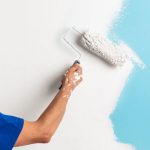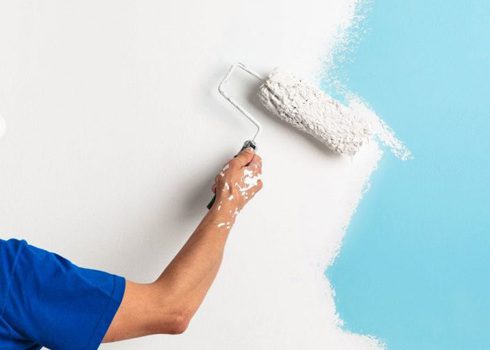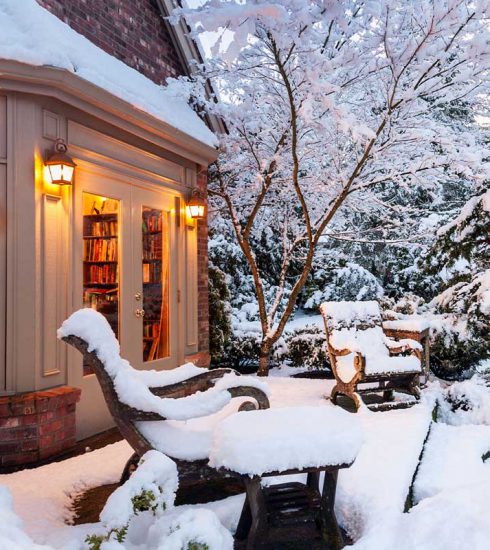11 Most Effective Ways to Prevent Dampness on Walls During Monsoons
Last updated on December 7th, 2022 at 05:37 am
There is a wave of happiness all around the country with the arrival of the monsoon season in India.
The sudden rain showers fill everyone’s hearts with so much comfort and relaxation after a hot and humid day. But, the rainy season also brings some serious troubles for the people like excessive traffic jams, water clogging, etc., in the world outside and in their homes.
One of the people’s biggest concerns during the monsoons is the dampness on the walls of their homes, leading to the growth of fungus and molds. Prolonged exposure of walls to moisture can seriously cause damage, disrupting the design of the house, so it is advised to tackle this problem as soon as possible. Moreover, damp walls are also not a good omen, according to Vastu Shastra.
Table of Contents
What caused dampness on walls?
During the monsoon season, the moisture seeps in the walls from the outside, leading to dampness on the walls of your home, causing leakage, peeling paint, growth of mold and fungus, and odor of moisture in your homes. The stains of this dampness remain on the walls until you get your house painted.
Several reasons can cause moisture on your walls:
- Continuous rains can cause dampness on your walls as they don’t get time to dry out.
- Rising of the water from the ground level.
- Blockages in the drain pipes.
- Sloping roof surfaces can lead to the percolation of water in your home, causing cracks on walls.
Ways to Prevent Moisture on Walls
Use these practical ways to reduce the moisture in your homes and create a healthy home environment.
1. Proper ventilation in homes
Ventilation in homes becomes essential in the rainy season. It would be best to tackle the rise in the humidity levels in the atmosphere by opening all the doors and windows to let fresh air come in. One of the significant reasons for the dampness on walls is the trapped moisture in homes with less or no ventilation. You must also remove the rains outside and the steam from the warm water used in homes to keep the indoor environment dry and healthy. Proper circulation of air in your homes will stop the infestation of fungus and molds on the walls and other areas of your home.
Quick tip: Keep a regular check on the ceiling of your bathroom and around the window frames for the growth of black mold as it hints that the moisture is still trapped in your home, and you have to pay attention to it.
2. Identify the source of moisture
The foremost step in tackling the issue of the dampness of walls is to check the areas affected and find its primary source from where it is originating. Some of the signs include moisture on ceilings and walls, peeling paint, or white mineral deposits on the walls. After you have identified the moisture areas, you should now look for the potential source like leakages in pipes, cracks on walls and ceilings, or cracked tile grout.
3. Reduce humidity levels
The most straightforward methods to reduce the level of moisture in homes are:
- Cover the saucepans when you are cooking.
- Wiping the bathroom floor after taking a bath.
- Dry your clothes outside and not inside.
- Buy a humidifier for your home to remove humidity in homes.
4. Get indoor plants to absorb moisture
Houseplants such as peace lily, Areca Palm, Boston ferns, English Ivy, and spider plants successfully eliminate moisture from the indoor air. They also purify the indoor air from harmful substances that are dangerous to human health.
5. Switch on exhaust fans
People should install exhaust fans in the kitchen and bathroom as these are the places in homes with maximum moisture levels. Turning them on prevents the condensation of water in these areas.
6. Remove molds from walls
The growth of molds usually takes places where water vapor has not escaped outside. The most common areas in homes where this occurs are on the walls behind the furniture, the window sill, unused corners of the house, closed kitchen cabinets, and wardrobes. Keeping two inches in between furniture and the walls will improve air circulation and prevent mold growth.
7. Seal the cracks on walls
The cracks on the walls and near window and door frames allow the moisture to penetrate in the structure of your house. It can lead to damp patches on the walls. Filling these cracks with a good quality wall putty will not allow the moisture to get in and prevent dampness on the walls.
8. Waterproofing the outside walls
Waterproofing coats on the outside walls of your home are essential to stop the seepage of water or moisture to the interiors of the house in the rainy season. It will act as a hindrance to the rainwater and moisture and prevents dampness on the walls.
As there are higher chances of leakages in monsoon from the roof, so waterproofing the top will prevent any seepage of water into your home.
9. Use vapor retarders
Vapor retarders are excellent methods to prevent moisture from seeping through the floors, walls, or ceilings. They can be in specially treated paints, metallic foils, and plastic sheets to reduce water vapour in homes.
10. Get a dehumidifier
A dehumidifier soaks all the water vapour in the house and helps in the prevention of dampness.
11. Pick good construction material
If you are moving into your new home in this monsoon, picking up a good quality construction material for your house will keep the structure of your home in perfect condition for a long time. Using a concrete base rather than a plaster for the interiors is advised. Make sure that the kitchen of your home is well-equipped with air vents and conduits.
Some more preventive tips:
- Make sure you dry clothes in the open and not inside the house.
- Invest your money in a good gutter system and downspout.
- Reduce the number of indoor plants in your home as they release moisture into the air.
- Waterproof the outside walls up to a minimum height of 20 inches.
- Construct waterproof foundations with concrete material up to 40 inches.
- Keep the foundation of your home safe with geotextiles or impenetrable films.
Ending Note
Any unwanted water collection within your home is not suggested. It can be harmful to your health and the structure of your home that you have built with your sweat and blood. When water seepages or leakages in the house are left unattended, it can lead to the growth of mildew and fungus on the walls and damage the internal structure of your home.
By God’s grace, there are numerous helpful ways to prevent dampness from entering your homes in the most loved season of the year. After all, a little prevention is always better than a cure!







